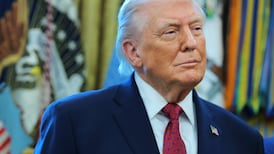The deal reached in principle between president Joe Biden and the Republican speaker of the House of Representatives Kevin McCarthy marks a significant step away from a potentially hugely damaging US debt default.
Yet there are still considerable political and logistical hurdles that will have to be overcome if the United States government is to avoid running out of money by the beginning of the week after next.
Treasury secretary Janet Yellen warned on Friday evening that the US government would not have the resources to meet its obligations after June 5th unless action was taken to raise or suspend the current limit on the amounts it can borrow.
A vote in the House of Representatives on the deal reached on Saturday night is expected to take place on Wednesday.
READ MORE
But that would only be the first part of the legislative process. The bill would also have to go before the US senate.
If Yellen’s deadline is to be met, all this will have to be completed before Monday of next week.
However there are a number of politicians on the right, and potentially some on the left, who are unhappy with some of the terms of the proposed deal.
The White House and Republican party leaders were trying to sell the tentative deal to their respective members on Sunday.
McCarthy on Saturday night, in brief public comments aimed, obviously, at his base, stressed that the deal would involve “historic reductions in spending” while there would also be no new taxes, no new government programmes and would include reforms to lift people out of poverty.
Biden said the deal was “good news” as it prevented what could have been a “catastrophic default”.
But he also acknowledged that not everyone would get what they wanted.
Indeed within hours there were already rumblings of revolt from some hard right conservatives in the House of Representatives.
“No one claiming to be a conservative could justify a ‘Yes’ vote”, one representative, Bob Good, tweeted Saturday night.
But on Sunday morning Mr McCarthy suggested a majority of his members in the chamber would back the deal.
For the White House, it is likely to have to face unhappiness from some progressives at elements of the deal, particularly the new work requirements for those accessing federal social programmes such as food stamps for low income groups.
Some Democrats are also likely to be angry at moves to row back on funding originally allocated to boost the US revenue authorities to investigate the tax affairs of the wealthy and big corporations.
On Sunday Pramila Jayapal, chairwoman of the House of Representatives progressive caucus, signalled Democratic party leaders should worry that her group won’t support the agreement.
But given the short timeline to avoid a default, it is not only politicians voting against the deal who would cause difficulties. People seeking to gum up the works with delaying tactics – and there are many avenues for that available in the workings of the US Congress – would be almost equally as problematic.
The US government is permitted by law at present to borrow up to $31.4 trillion (€29.3 trillion). However because the federal government runs a budget deficit it needs to increase this debt ceiling to pay its bills.
With the debt ceiling approaching, Biden’s Republican opponents, who won control of the House of Representatives last November, sought to use this as leverage to press for significant cuts in government spending as well as other concessions.
The tentative deal reached on Saturday night involves raising he debt limit for two years while capping spending over that time, clawing back unused money originally allocated during the Covid-19 pandemic, accelerating the process to allow some energy projects to proceed and changes to the operation of some social programmes for poorer Americans including revised work arrangements.
But Republicans had wanted to go much further with deeper spending cuts over a longer period of time.
Biden had wanted to close to tax loopholes and include measures to raise additional revenue but this was rejected by Republicans.
However, for the White House a two-year increase in the debt ceiling would be hugely important as it would take the issue off the political agenda in advance of the 2024 presidential election.
Biden had already hinted that some Republicans wanted to flirt with a US debt default – and the domestic and global economic chaos it would bring – as this would damage his re-election prospects.
Former president Donald Trump effectively encouraged Republicans in the House of Representatives to push ahead with a US debt default if they did not secure “massive cuts”.
As it tries to sell the new deal, some Democrats may question the White House as to why they ended up in a situation of having to negotiate unpalatable concessions with Republicans when they could have raised the debt limit last year when their party still had a majority in Congress.
However, the White House is likely to argue that the new proposed agreement secures some important wins including the protection of environmental provisions introduced last year, funding for clean energy and plans to relieve student debt.
The extent of any Republican or Democrat backlash against the proposed agreement is likely to emerge over the next day or so.
It also remains to be seen whether any opposition from hard line Republicans could jeopardise McCarthy’s position as speaker.
But even if the House of Representatives backs the deal – possibly relying on centre-ground Republicans and Democrats – attention will turn to the senate.
At least one conservative Republican senator has already said he would use “every procedural tool” at his disposal to slow down the passage of any debt ceiling bill if it did not include “substantial” reforms.
The threat of a US debt default has eased but has not disappeared entirely.













